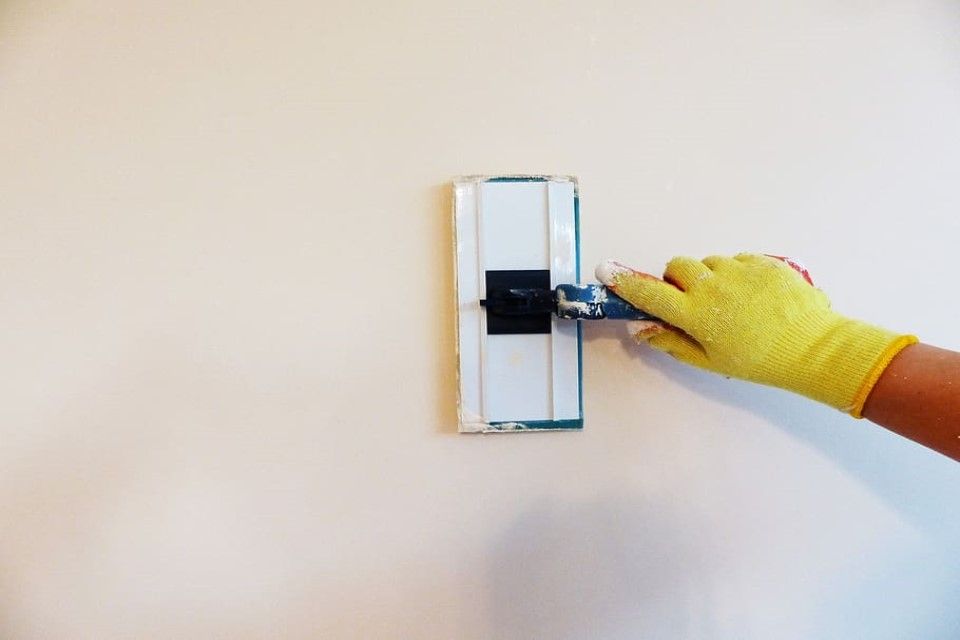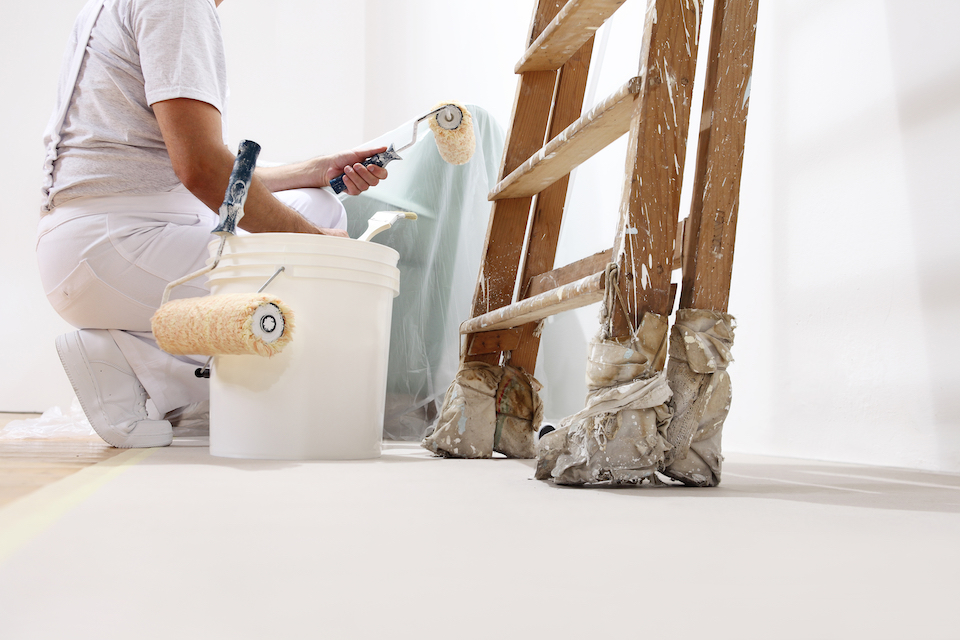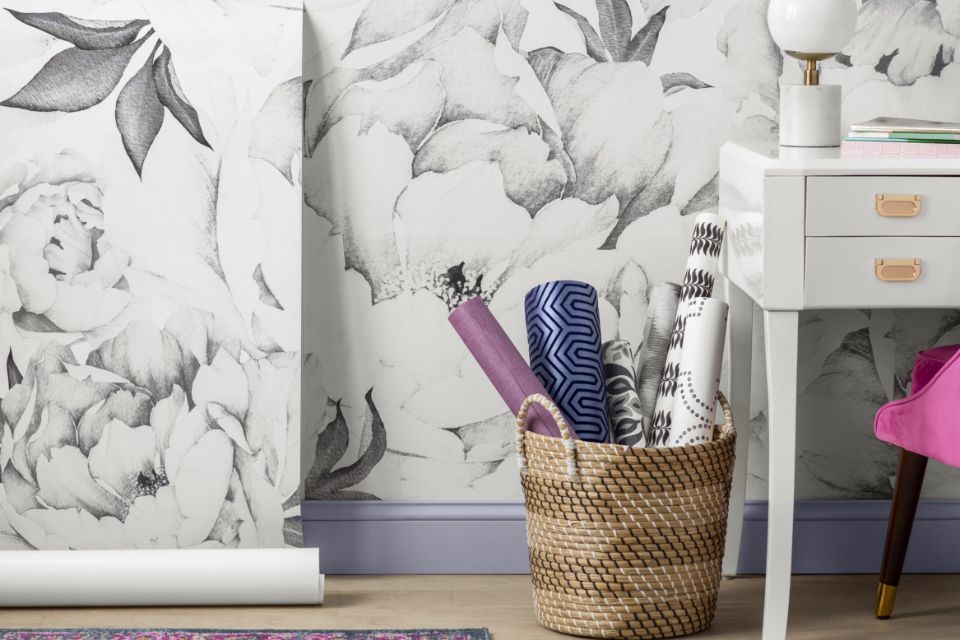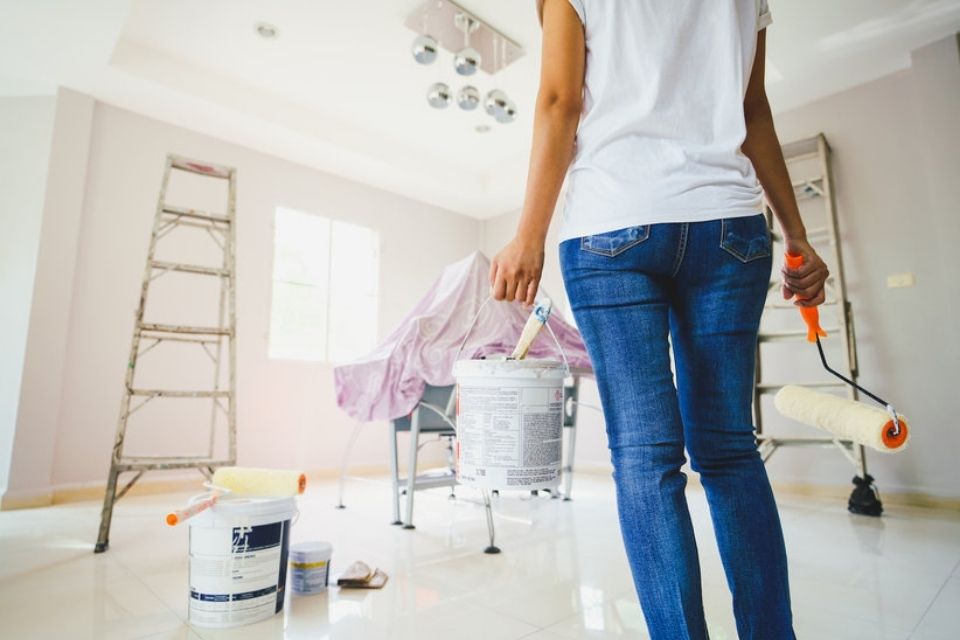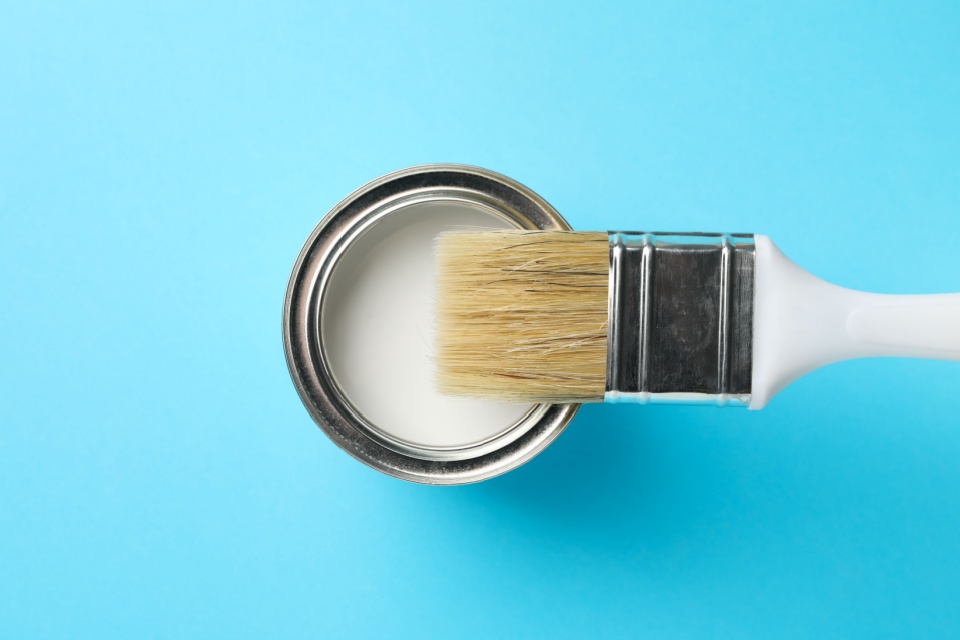Introduction to The Best Paint Pads
In our guide to the best paint pads, we will discuss what paint pads are, the different types of paint pads and the best paint pad products on the market. We will also look at additional topics such as paint pad edgers.
This article will help if you are planning on using a paint pad and want to know what the best options are. You will also find this article helpful if you want to expand your knowledge of the subject.
What are Paint Pads?
For this section, we will explain what paint pads are. We will also explore topics such as their uses and the reasons behind their popularity. A paint pad is a flat paint applier that is usually rectangular.
It comes with a handle on the back while the front is usually foam and covered in short and tightly packed bristles. However, other types of paint pads exist. We will delve further into the different forms of paint pads in the next section.
Paint pads are generally used for painting straight lines and corners.

Paint pads may be used due to their benefits over rollers. For example, paint pads are cleaner to use than rollers as they do not spray. Paint pads can give a smooth, even finish to the surfaces you are painting.
Paint pads have become popular due to their benefits over rollers, their ability to offer good coverage and the smooth finish they provide which can be especially advantageous for laying paint on the ceiling.
Types of Paint Pads
We will now look at some of the different types of paint pads. In this section, we will analyse various paint pad types including microfibre paint pads and foam paint pads.
Sheepskin Paint Pads
This type of paint pad has a sheepskin front. It is lightweight and has ergonomic advantages. They are often used for hard to reach places. A sheepskin option is a good paint pad for behind radiators. It can also act as a good corner paint pad.
Pros:
- Lightweight.
- Ergonomic.
- Most products are washable and reusable.
- Can be used for hard to reach areas.
Cons:
- Less products available in comparison to foam paint pads.
- Unsuitable for vegetarians and vegans.
Microfibre Paint Pads
Microfibre paint pads contain a microfibre front which can come in varying pile heights. These types of paint pads are often used for wood floors.
Pros:
- Offers a very smooth finish.
- Results in limited shedding.
- They can handle large amounts of paint at any one time.
Cons:
- Some products are limited to wood floor paint jobs.
- While many products are available, there are not as many compared to foam paint pads.
Foam Paint Pads
The most commonly used type of paint pads are foam paint pads. It comprises a foam front with tightly packed bristles covering its surface. Foam paint pads can generally be used for most, if not all rooms.
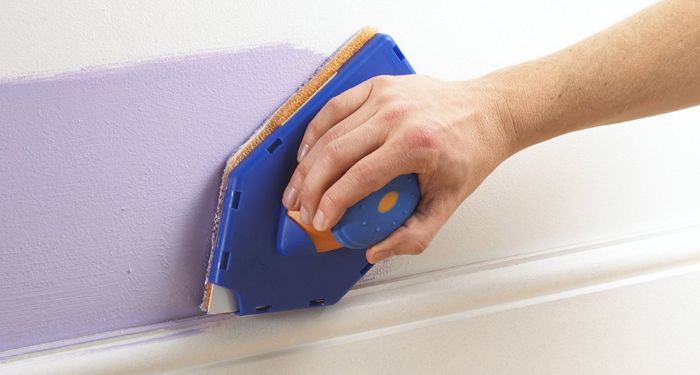
Pros:
- Designed for general use.
- The most popular type of paint pad.
- Commonly used.
- It is easiest to find paint pad products which are foam-based.
Cons:
- Usually foam paint pads are not designed for specific paint jobs.
- Still require a longer time to reload than rollers.
Mohair Paint Pads
Mohair paint pads utilise yarn taken from the hair of the Angora goat. This paint pad type can generally be used with most decorative coatings.

Pros:
- Particularly beneficial with most decorative coatings.
- Many sets of mohair paint pads come with more than one paint pad size.
Cons:
- Unsuitable for vegetarians and vegans.
- Less products available in comparison to foam paint pads.
Best Paint Pads Available
With many paint pad products available, it may prove difficult to find the best ones. For this section, we will discuss some of the best paint pad products you can buy and break down the specifics of each product as well as listing their pros and cons. We will also discuss the average cost of each of these products.
Harris Paint Pads
One popular brand which offers paint pads is Harris. Most of their products can be used with any type of paint. Individual paint pads from Harris cost roughly £2 to £4. Several piece Harris paint pad sets are available for around £6 to £9. Harris offers one of the best paint pad set choices on the market.

Pros:
- Affordable products.
- Widely available.
- Mostly positive reviews and ratings online.
Cons:
- Some products have relatively poor ratings online.
Wickes’ Paint Pads
We will now discuss paint pads offered by Wickes. Many of Wickes’ products can of course be found through their own website. A single paint pad from Wickes costs around £3 to £4. Paint pad sets including tray sets offered by Wickes cost about £5 to £10.
Pros:
- Affordable products.
- It is easy to find products through the producers’ website.
Cons:
- Products not as widely available and mostly limited to the manufacturers’ website.
- Several products have poor to mediocre ratings online.
Stanley Paint Pads
Another popular brand offering Paint Pads is Stanley. Their products are available in various stores and websites. Stanley Paint Pads can be found on eBay and Amazon among other sites. A Stanley paint pad set will cost about £5 to £7.

Pros:
- Affordable products.
- Tend to offer good designs with various capabilities.
Cons:
- Not as widely available.
- Mostly limited to eBay and Amazon in terms of online sales.
Paint Pad Pro
Another common brand for paint pads is Paint Pad Pro. The bumper pack set offered by Paint Pro costs around £25 to £35.
Pros:
- Recommended by TV DIY expert Tommy Walsh.
- Designed with the ability to paint hard to reach areas.
Cons:
- Mostly poor to mediocre ratings online.
- Online sales are largely limited to Amazon.
- Many negative discussions exist regarding this brand on DIY forum sites.
Monarch Paint Pads
Monarch is another British brand which offers paint pads. Their paint pads are suitable to use with any type of paint. The primary seller of Monarch products is Homebase. Individual Monarch paint pads usually cost between £6 and £8.
Pros:
- Works with any type of paint.
- Washable product.
- For interior and exterior use.
Cons:
- More expensive, largely because it is primarily limited to one seller in the UK.
- Not as widely available as some of the aforementioned brands.
Woodleys Decking Applicator Pad
This paint pad is a good option when it comes to finding a decking paint pad applicator. It is a paint pad product designed for use on decking. It costs roughly £7 to £12.

Pros:
- Designed for use on decking.
- Plenty of positive ratings online.
- Suitable for smooth and grooved decking.
- Can work on hardwood and softwood.
Cons:
- Somewhat more limited in terms of where you can buy it from.
- Not designed for general use.
Best Paint Pads for Walls
In this section, we will discuss the best paint pads for walls. A foam paint pad can be used on practically any wall. Sheepskin, microfibre and mohair paint pads may also be used.
Some microfibre products are designed specifically for wood floor painting. Sheepskin products are also more tailored in their design and are best used for hard to reach places.
Generally, a foam paint pad will be the best option. Foam paint pads can provide good coverage for a wall and cover it quickly. Foam paint pads will offer a smooth, even finish to your wall.
For painting a wall, you should use a large paint pad. Afterwards, a brush or small pad will still be needed to cut in any wall to ceiling lines and to paint areas surrounding woodwork.
Best Paint Pads for Ceilings
We will now analyse the best ceiling paint pad options. Any type of paint pad can be used to paint a ceiling although some individual products may specify otherwise.
A foam paint pad is once again, the best option. The smooth finish offered by a foam paint pad is especially beneficial for painting a ceiling.

The fact that foam paint pads do not drip, unlike rollers is another clear benefit to painting a ceiling with a foam paint pad. As with walls, they will leave an even and smooth finish. A large paint pad should be utilised for laying paint on a ceiling.
Best Paint Pad Edger
For this section, we will explain what paint pad edgers are and discuss the best brands which provide these products. Paint pad edgers are tools used to lay paint along the edges of an area such as a wall or trim.
They are used to paint in a straight line and are designed as a more accurate alternative to the use of a paint pad for cutting in.
Shur-line
The Shur-line paint pad edger is promoted as a premium, professional paint pad edging product. It is available for around £5 to £10.

Pros:
- Works fast.
- Affordable.
- Widely available online.
- Easy to recycle when you’re finished with it due to its size and minimal number of moving parts.
Cons:
- You have to be cautious with the quantities of paint you add to the edger.
- It has quite a few mediocre ratings on sites like Amazon.
- Comes with a limited lifespan.
Invero
Another popular brand which produces paint pad edgers is Invero. Their products are widely available online. Invero paint pad edgers cost between £5 and £20.
Pros:
- Widely available.
- Affordable.
Cons:
- Some sales of this product are not as cheap as products like those of Shur-line.
- Has a sizeable number of one-star ratings on sites like Amazon.
HomeRight
HomeRight is another brand which sells a paint pad edger. Their product is unique in that there is a tube attached which is designed to feed paint to the pad. You can purchase this product for about £5 to £15. There is a case to make, that this is the best paint pad system out there, but it is certainly one of the best. However, it can be tricky to use.
Pros:
- You don’t need to continuously re-apply the paint thanks to the tube.
- You can fit up to 15 linear feet of paint in the tube.
- The pads are easy to find and inexpensive.
Cons:
- The paint pad is quite thin.
- The mechanisms of this device can take some getting used to.
- The spring-loaded lever can be a bit difficult to use.
- This product still has plenty of mediocre ratings online.

